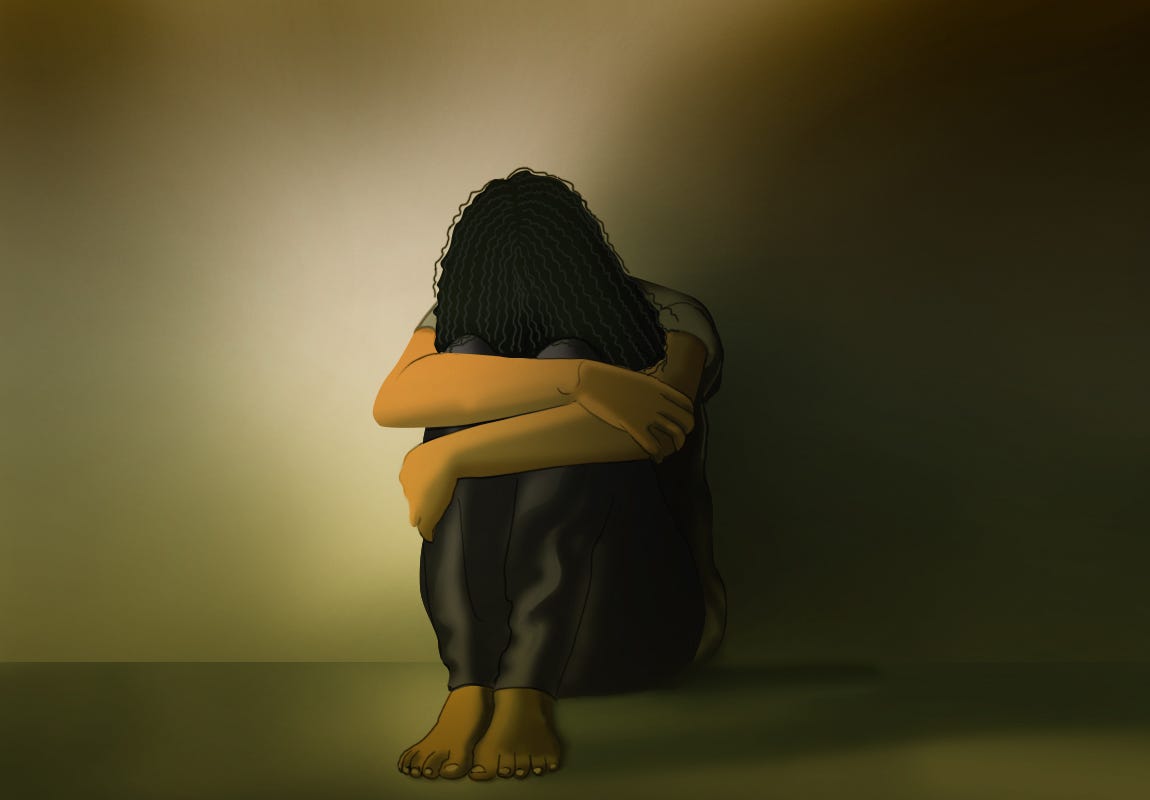PTSD is a psychiatric disorder that can occur in people who have experienced or witnessed a traumatic event such as a natural disaster, a serious accident, lost a dear one, break-up, a terrorist act, war/combat, or rape, or who have been threatened with death, sexual violence, or serious injury.
PTSD has been known by several names in the past, including "shell shock" during World War I and "combat fatigue" post World War II, but it is not a mental disorder that affects only combat veterans. PTSD can affect anyone, of any ethnicity, nationality, or culture, at any age. According to the American Psychiatry Association, every year, approximately 3.5 percent of adults in the United States are affected by PTSD, and one in every eleven people will be diagnosed with PTSD during their lifetime. PTSD affects women twice as much as men. Three ethnic groups are disproportionately affected and have higher rates of PTSD than non-Latino whites: US Latinos, African Americans, and American Indians.
People suffering from PTSD have intense, disturbing thoughts and feelings about their traumatic experience, that last long after the event has ended. They may relive the event in flashbacks or nightmares, experience sadness, fear, or anger, and feel detached or estranged from others. People suffering from PTSD may avoid situations or people who remind them of the traumatic event, and they may have strong negative reactions to seemingly innocuous things such as a loud noise or an unintentional touch.
A traumatic event must be experienced in order for PTSD to be diagnosed. However, the exposure may be indirect rather than direct. For example, PTSD may develop in a person who witnesses the violent death of a close family member or friend. It can also happen as a result of repeated exposure to gruesome details of trauma, such as police officers being exposed to details of child abuse cases.
Different situations that elicit PTSD
Trauma of military combat
Trauma of natural disaster
Trauma of man-made disaster
Trauma due to severe threat to personal security and safety
Symptoms and Diagnosis
PTSD symptoms are classified into four categories. The severity of specific symptoms can vary.
Intrusion: Intrusive thoughts, such as repeated, involuntary memories, distressing dreams, or flashbacks of the traumatic event are all examples of intrusive thoughts. Flashbacks can be so vivid that people believe they are reliving or seeing the traumatic experience.
Avoidance: Avoiding traumatic event reminders may include avoiding people, places, activities, objects, and situations that may elicit distressing memories. People may try to avoid recalling or reflecting on the traumatic event. They may be reluctant to discuss what happened or how they feel about it.
Alterations in cognition and mood: Inability to remember important aspects of the traumatic event, negative thoughts and feelings leading to ongoing and distorted beliefs about oneself or others; distorted thoughts about the cause or consequences of the event leading to wrongly blaming self or other; ongoing fear, horror, anger, guilt or shame; much less interest in activities previously enjoyed; feeling detached or estranged from others; or being unable to experience positive emotions.
Alterations in arousal and reactivity: Arousal and reactive symptoms may include being irritable and having angry outbursts; acting recklessly or destructively; being suspicious of one's surroundings; being easily startled; or having difficulty concentrating or sleeping.
Many people who witness a traumatic event experience symptoms similar to those described above in the days that follow. To be diagnosed with PTSD, symptoms must last for more than a month and cause significant distress or problems in the individual's daily functioning. Many people develop symptoms within three months of the trauma, but symptoms can appear later and last for months or even years. PTSD is frequently associated with other conditions such as depression, substance abuse, memory problems, and other physical and mental health issues.
Related Conditions
Acute Stress Disorder.
Adjustment Disorder
Disinhibited Social Engagement Disorder
Reactive Attachment Disorder
Treatment of Post Traumatic Stress Disorder
Medication
Cognitive Behavioural Therapy
Stress Inoculation Therapy
Group therapy
EMDR (Eye Movement Desensitisation and Reprocessing)
Existential approach
Family therapy
Now put on your thinking hats and think about the following questions for a couple of minutes.
How would you explain the term “Post-Traumatic Stress Disorder” to your students?
Can you think of some factors that may contribute to PTSD?
Can you think of ways to help a friend or relative who is suffering from PTSD?
Write down your thoughts and discuss them with your students, children and your colleagues. Listen to their views and compare them with your own. As you listen to others, note how similar or different your views are to others’.
Thank you for listening. Subscribe to The Scando Review on thescandoreview.com.
Happy Teaching!














What is Post-Traumatic Stress Disorder (PTSD)?